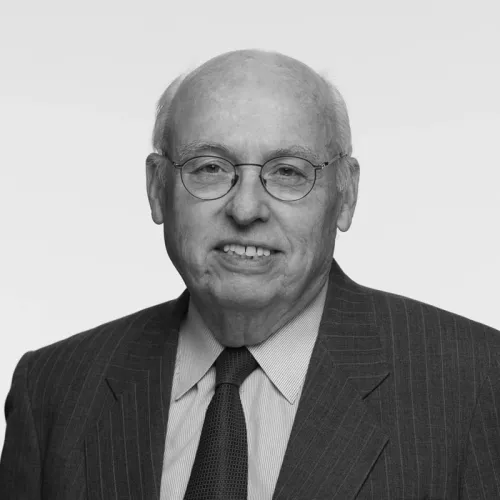California Urgent Care Centers Offer Opportunities for New Revenue, but Raise Legal Issues
California Urgent Care Centers Offer Opportunities for New Revenue, but Raise Legal Issues
Urgent care centers have emerged in recent years as an increasingly popular alternative to traditional health providers. They fill an unmet need for medical problems that require immediate attention for which a patient cannot wait days for a family practice appointment, but which do not warrant the expense of an emergency room visit. In 2012 alone, over 160 million visits were made to urgent care centers nationwide.[1]
The potential revenue generated by an urgent care center can be substantial. According to the Urgent Care Association of America, there are approximately 9,000 urgent care centers in the United States, and, on average, an urgent care center sees 357 patients per week[2] The average urgent care center visit is reported to cost about $155 per visit.[3] Doing the math, therefore, such a facility can expect to bring in over $55,000 per week in patient care revenue.
These numbers have not escaped the notice of institutional investors. The New York Times recently reported that since 2008, private equity firms have invested $2.3 billion in urgent care centers.[4] Commercial insurance companies, public and private health systems, and local hospitals have also sought to develop, acquire, or partner with urgent care centers in an effort to capture new streams of revenue. At the same time, urgent care centers raise certain legal and regulatory questions in California.
Licensure
Since they provide health services to the public, urgent care centers must be operated under some kind of state-approved licensure. In California, they may exist as a hospital outpatient department, depending on a number of considerations. In all other cases, they must be operated under the licenses of the physicians who provide services on their premises, in the same way as a private medical practice. This raises issues when, as in most cases, the organization underwriting the urgent care center is not a physician or medical group, but rather some other entity such as a distant health facility or private investment company.
Corporate Practice of Medicine
The most obvious solution is for the organization underwriting the urgent care center to employ the physicians who will be providing services on its premises. In California, however, this option is prohibited by the “corporate practice of medicine” rule, which prevents lay entities from interfering with the practice of medicine. Under it, a physician or medical group must own the urgent care center and direct the care provided in it.
This does not mean that lay entities cannot underwrite or otherwise be involved in urgent care centers. The solution is for the lay entity to set up the physical plant, employ non-physician staff, assume responsibility for equipment and supplies, and generally provide administrative services for the enterprise. In this capacity, it is acting as a “management services organization” or “MSO,” something that businesses have done for physicians in California for a number of years. The lay entity bills payors and patients in the medical group’s name and receives payment for its services from the medical group according to certain accepted reimbursement methods. The relationship, and the flow of profits, must be carefully constructed to avoid being deemed ownership by the lay entity of the medical group’s practice in violation of the corporate practice rule.
Referral Fee Rules
The payment arrangement also must be fashioned to avoid running afoul of federal and state referral fee rules, including anti-kickback statutes. Violations can occur if the physicians are deemed to be underpaid for their services in comparison to what they would otherwise receive without the lay entity. While it is recognized that an MSO arrangement provides valuable economic benefits for which the lay entity should receive fair compensation, any significant over-compensation could be seen as involving a hidden referral fee paid by the physicians for the stream of patients that the business is generating. Financial arrangements must take this possibility into account.
Other Health Care Licenses
While California does not currently license urgent care centers as such, certain services performed within these facilities are independently subject to state or federal licensure. In order to perform laboratory testing onsite, for example, an urgent care center will have to obtain a clinical laboratory license from the California Department of Public Health (CDPH), as well as a federal Clinical Laboratory Improvements Act (CLIA) certificate, issued by the Centers for Medicare and Medicaid Services (CMS). X-ray and radiologic machines used in patient care must be registered with CDPH, as well. If the facility intends to have an onsite pharmacy, it must obtain the appropriate permit from the California Board of Pharmacy. To dispense certain categories of scheduled drugs, registration with the federal Drug Enforcement Agency is also required.
Insurance Reimbursement
Depending on its business model, an urgent care center may choose to enroll as a provider with private insurers and government programs, such as Medicare or Medi-Cal. This will invariably broaden the center’s patient base. Doing so, however, comes at the expense of accepting all the conditions of participation of these programs, such as fee limits.
Alternatively, an urgent care center may decide to opt out of participation in these programs and simply require patients to self-pay for services. This approach allows the facility more freedom in setting rates and in adopting more efficient billing practices. However, it also may limit the ability of the physicians to practice in other settings that participate in government and private pay programs and require their physicians to do so as well.
[1] Urgent Care Association of America, Urgent Care Industry Information Kit, 2013, p. 4, available at http://www.ucaoa.org/resource/resmgr/Files/UrgentCareMediaKit_2013.pdf.
[2] Id.
[3] Julie Creswell, Race is On to Profit From Rise of Urgent Care, N.Y. Times, July 9, 2014.
[4] Id.
For More Information, Please Contact:
Receive legal alerts, case analysis, and event invitations.
